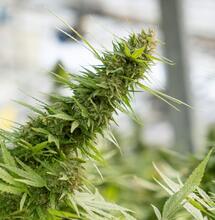The Legal Cannabis Market in Canada

In 2018, Cannada became the first industrialized country to introduce a legal recreational cannabis market. Only Uruguay before that had active legislation that allowed adults to consume marijuana products freely. While legalization has certainly brought economic benefits for Canada, the transition period was not without its ups and downs.
Some of the most successful enterprises in the legal cannabis sector are today based in Canada. The legislation boosted the adult-use market segment on par with the medical one. The process was bumpy for some cannabis manufacturers and operators, however. In the illegal-to-legal market transition, not all Canadian companies performed as they would or wish. A recent analysis from a team of Canadian and Chinese researchers who've drilled into the effects of legalization has shown some companies better performed in the pre-legalization era than afterward. From a stock market perspective, legalization was a bit of a fizzle.
However, from a customer-consumer perspective, the legalization has been a success. People are free to buy cannabis goods, and patients can medicate with it without facing barriers with the justice system.
Legalization is also rated successful from the perspective of local governments and taxpayers as there's no longer a loss of public resources on broken public policies enforced in the prohibition era.
At the onset of legalization, the Cannabis Act (Bill C-45) provided the rules and regulations concerning manufacturing, distribution, retail, and possession of cannabis on the territory of Canada.
Under Canadian regulation, each province and territory has its distinct regulatory framework for managing the cannabis market. This includes particulars like the legal age of consumption, available goods for purchase, and how much you can own on your person at any given time.
In the initial days of legalization, consumer displeasure was evident, especially in provinces like Ontario, where the governing policies and eligibility criteria for obtaining licenses required for running a dispensary flopped. Stringent measures led to a short supply of cannabis goods and ordeals around ordering and delivery. Customers were left largely underserved.
In the first year of legalization, Ontario, which is Canada's most populous province, had less than 30 dispensaries. The province's lawmakers greenlit privately-run cannabis stores only in the spring of 2019. They worked intensely to remove other obstacles so that the number of dispensaries could grow to over 1,000 today.
Each province took a different route to upgrade the foundation laws. For instance, Saskatchewan allowed 51 private-owned cannabis shops as soon as prohibition was lifted, while Quebec limited all sales to government dispensaries.
In British Columbia, people could supply stash at only one government-owned dispensary in Kamloops initially, while over 100 private retailers waited for their license to be approved. British Columbia today has more than 200 private or family-owned cannabis businesses.
The different Canadian provinces took some time to polish regulations for cannabis businesses and sales. But even now, regions are not synced on a number of matters. Users can travel to another territory only to find out the cannabis product they most commonly use at home might not be available there.
Local regulations have also dictated what kind of companies and what types of products will exist in each Canadian province. For instance, it makes no sense to build a private retailer business in areas limited to government-controlled shops.

When it came to products, only flowers, seeds, oils, and marijuana plants were made available when legal markets launched in 2018. The initial regulation did not encompass edibles, concentrates, vapes, or similar products. Some of these products gradually enriched dispensaries' shelves by 2019, but stuff like creams and cosmetics remains further restricted under Canadian laws.
Dried flowers is so far the most successful product on the Canadian legal market, and this is confirmed with some of the latest numbers on total expenditure.
In the first six months of 2021, sales on all legal cannabis produce capped at CA$1.8 billion. That's down from 80% in the period of July-December 2020 and closer to 90% in early 2020. At which point, edibles and vapes were still not legally accessible. The value of the medicinal market stood at CA$242 million during the same period.
Dried cannabis flower sales hit CA$1.3 billion, or 73% of total expenditure in the months January-June 2021. Extract and concentrates stood at CA$291.7 million, or 16.4% of total spending. Drinks were at $23.6 million, or 1.3% of the total. The growing edibles segment is taking a chunk from dried flower sales, but besides waning trends, flower still is the no. 1 commerce product.
The systematic flaws of cannabis legalization in Cannada have been there since day one, however, things have only gotten better ever since prohibition ended. That's indisputable. The changing market trends indicate that lawmakers and regulators are still crafting upon the initial legislation. If there's one major take of the entire story here, Canada is a glimpse into the future of other countries and economies that also want to set up fully legal markets. Lawmakers abroad can take a lead from the North American country and learn from its experiences, mistakes, and successes.







